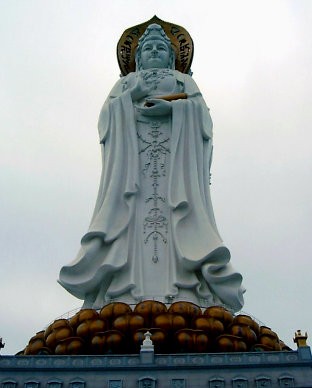The three faces of Guanyin

Any tour of the modern world’s Seven Religious Wonders would include a stop on the southern Chinese island of Hainan. Here since 2005 has stood a colossal statue of Guanyin, the Buddhist goddess of compassion. The figure astounds not just by its sheer size—it is 354 feet high—but by the mere fact of its creation: it was commissioned and funded by a Chinese communist government long bitterly opposed to religion of every stripe. The statue of Guanyin is an object lesson in the new China’s radically changed attitude to faith—but also a warning to Christians who place their hopes in any future mass conversions in that vast country.
When Westerners study Chinese religion, inevitably they focus on the Christian story. They know about the horrible sufferings of Christians during the Cultural Revolution of the post-1966 decade and the surging national revival that began in the 1980s. Some estimates suggest that China today has over 100 million Christians, with projections of 150 or 200 million by 2050. Even if those figures are too high—and I believe they are—we are still dealing with an astonishing success story. Visions of national conversion don’t seem farfetched.
Missing in such accounts, though, are China’s other historic religions, which have also benefited from the milder official approach. Buddhism, Daoism and Confucianism were equally suppressed during the horrific Mao Zedong years, when literally a million temples and shrines were smashed and vandalized. Since 1982, these religious systems have revived and even received official support. Many temples have been rebuilt, and new generations of devotees have become priests and monks. China is now officially the world’s largest Buddhist nation.




